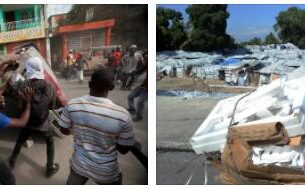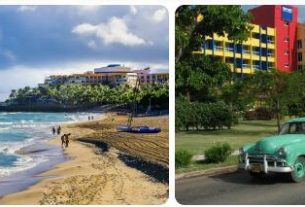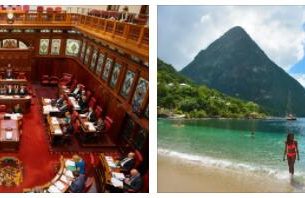The state system is a presidential republic. The 1966 Constitution is in force.
in force. Administratively, the country is divided into 31 provinces (Azua, Ato Mayor, Baoruco, Barahona, Valverde, Dajabon, Duarte, Independencia, La Al Tagracia, La Vega, La Romana, Maria Trinidad Sanchez, Monsignor Nuell, Montecristi, Monte Plata, Pedernales, Peravia, Puerto Plata, Salcedo, Samana, San Cristobal, San Pedro de Macoris, Santo Domingo, Santiago, Santiago Rodriguez, Sanchez Rami Res, San José de Ocoa, San Juan de la Maguana, Elias Piña, El Seibo, Espayat) and 1 national district. Largest cities: Santo Domingo, Santiago. Check diseaseslearning for political system of Dominican Republic.
The highest body of legislative power is the Congress, which consists of the Senate (32 senators) and the Chamber of Deputies (150 deputies). The highest body of executive power is the cabinet of ministers. The head of state is the president, elected for 4 years (since August 16, 2004 – Leonel Fernandez). The head of the Congress is the President of the Senate (since 2002 – Andres Bautista Garcia). The Cabinet of Ministers is headed by the President.
Elections to Congress are held once every 4 years (the last one took place on May 16, 2002). By direct popular vote, one representative from each province and national district is elected to the Senate, and one representative from 50,000 inhabitants is elected to the Chamber of Deputies, and at least two deputies must be elected from each province.
The President of the Republic is popularly elected every 4 years by direct secret ballot. He may be re-elected for no more than one new term. Together with the President, the Vice President is elected. The president appoints the members of the country’s government.
Prominent statesmen: Juan Pablo Duarte (1813-76) – hero of the struggle for independence from Haitian and Spanish domination, the country’s first president; Ramon Mella (1816-64) – politician, general, hero of the struggle for independence; Pedro Santana (1801-69) – general, associate of J.P. Duarte and his successor as head of state; Francisco Sanchez del Rosario (1817-61) – statesman, general, hero of the struggle for independence and partisan struggle against Spanish rule; Joaquín Balaguer (born 1907) – President of the country in 1960-62, 1966-78, 1986-96, founder and long-term leader of the Reformist Party (later transformed into the Reformist Social Christian Party).
The provinces are headed by governors appointed by the president. The executive power of the national district and municipalities is elected at municipal elections held once every 4 years.
The country has a multi-party political system. The main political parties are the Dominican Revolutionary Party (DRP, founded in 1939), the Dominican Liberation Party (DPO, founded in 1973) and the Reformist Social Christian Party (RSKhP, created in 1986 as a result of the merger of the Reformist Party and the Revolutionary Social Christian Party).
The leading business organization is the Dominican Agro-Industrial Union (founded in 1984).
The main trade unions are the Autonomous Confederation of Christian Trade Unions (established in 1938), the Confederation of Dominican Workers (1938), and the General Trade Union Center of Workers (1973).
In the last presidential elections (held on May 16, 2004), the leader of the DPO, Leonel Fernandez, won a landslide victory (56.5% of the vote). DRP and RSHP candidates Hipólito Mejia and Eduardo Estrella won 34.1% and 8.7% of the vote, respectively. During the last parliamentary and municipal elections (held on May 16, 2002), more than 1/2 of the seats in Congress (29 in the Senate and 73 in the Chamber of Deputies) and control over most of the municipalities retained the DRP.
The Dominican Republic has diplomatic relations with most states of the Western Hemisphere, with many EU countries. Growing interaction with neighboring Haiti is associated with attempts to solve the problem of mass immigration from the neighboring country.
The President is the Supreme Commander of the Armed Forces of the country. They include the Army, Navy, Air Force and the National Police. The total number of military personnel is approx. 24 thousand people (2nd in the Caribbean after Cuba). The draft age is 18 years. Military service is voluntary. Her term is 4 years. Military spending – $ 180 million per year (1999).
The Dominican Republic has diplomatic relations with the Russian Federation (were established with the USSR in 1945). Formalized in 1991, when the exchange of ambassadors took place (concurrently). The government of the Dominican Republic decided to open an embassy in the Russian Federation in 2004.



